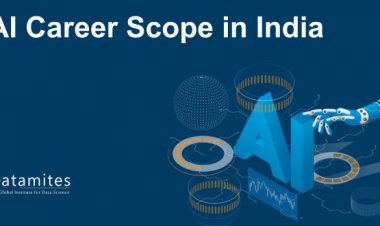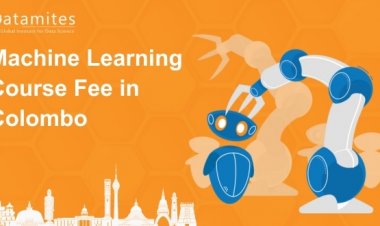What is Computer Vision? How Does it Work?

Computer vision is a branch coming under AI, that permits computers and systems to derive meaningful information from digital images, video, and other visual input – and take actions or make recommendations based on that information. Now that AI permits computers to think, computer vision empowers them to see and perceive. On account of breakthroughs in artificial intelligence and renovation in deep learning and neural networks, the field has been able to take great surges in recent years and has been able to transcend humans in some tasks connected to detecting and labeling objects.
One of the defining factors behind the growth of computer vision is the sum total of data we produce today that is then used to train and make computer vision better.
Computer vision is utilized in industries lining up from energy and utilities to manufacturing and automotive – and the market for computer vision is blooming. It is predicted to extend to USD 48.6 billion by 2022.
How does computer vision work?
Computer vision looks like a puzzle.
Don’t we all have a memory of putting together a puzzle after so much effort? Making mistakes one after another and finding solving it after that? Correspondingly, computers assemble visual images the same way you might put together a puzzle.
Think about how you look at the puzzle. You have all these pieces, and you need to assemble them into one image. How do Neural Networks work for Computer Vision? They segregate several different pieces of the image, make out the edges and then model the sub-components. By permeating through deep network layers and using a series of actions, they can arrange all pieces together, just like you would with a puzzle.
How do our eyes and brain work? How can our brain perceive the puzzle pieces and how do our eyes arrange them in order? Since we haven’t decided how the brain and eyes process images, it’s hard to say how well the algorithms used in the production estimate our own internal mental processes.
At a certain level computer vision is about pattern recognition. Since the beginning of life, human vision is essential, beautiful, and complex. Until a decade ago, machines weren’t able to perceive the visual world as efficiently as we used to.
Computer vision is essentially about how computers could perceive the visual world in the form of images and videos. From an engineering perspective, it attempts to replicate and automate tasks that can be performed by the human visual system.
Computer vision works in much the same way as human vision, except at the beginning of humans. Human vision has the advantage of a lifetime of reference for how to tell objects apart, how far apart they are, whether they are moving, and whether there is something wrong with the image.
The computer vision algorithms we use today are based on pattern recognition. We coach computers on tremendous amounts of visual data—computers process images, stamp objects on them, and identify patterns in those objects. For example, if we send a million images of birds, the computer will analyze them, identify similar patterns of all birds out there, and, at the end of the process, create a model of “birds”. Henceforth, it becomes easy for computers to know which is what!
Once the machine has analyzed the pixels, computer vision uses a neural network to predict the content of the image. With each prediction, the computer is fed multiple times through different layers of the neural network so that the machine comes up with the correct prediction. With multiple processing, the machine makes correct predictions as a probability. In such a situation, Artificial Intelligence Development Company is doing a lot of work in the field of computer vision.
The computer vision and hardware market is predicted to hit $48.6 billion by 2022.
Computer vision requires a lot of data. This drives the analysis of the data until it recognizes differences and eventually recognizes images.
You can also refer to What Is AI? Know Everything About Artificial Intelligence (AI) article for more details about Artificial intelligence.
Computer Vision Applications
- Self-Driving car
- Image Recognition
- Augmented Reality / Mixed Reality
- Health care
- Automotive Industry
- Retail
- Agriculture
- Device
- Open cv
- TensorFlow
- CUDA
- Simple cv
- GPU Image
How Important is Computer Vision?
Heightening applications of computer vision and machine vision are bolstering the current work architecture. The vitality of computer vision lies in its ability to solve almost any problem surrounding the world. It is one of the main technologies that facilitate the digital world to interact with the physical world. Computer vision facilitates self-driving cars to make sense of their surroundings. Computer vision enables computers to read and interpret complex data into simpler versions.
Computer vision is applicable in pretty much every sphere of life, like healthcare, retail, banking, education, agriculture, transportation, sports – you name it. Human beings have become so much accustomed to Computer Vision and its miraculous applications that a life without it is out of the question!
As per a report by market and market, the computer vision market is foreseen to expand to US$ 17.4 billion by 2024. Vision-based robotic systems and application-specific computer vision systems are altering the workplace to an increasingly large extent!
DataMites provides data science courses, deep learning, machine learning, artificial intelligence courses along with IABAC certification. Join now to become expert.

 Datamites Team
Datamites Team 



